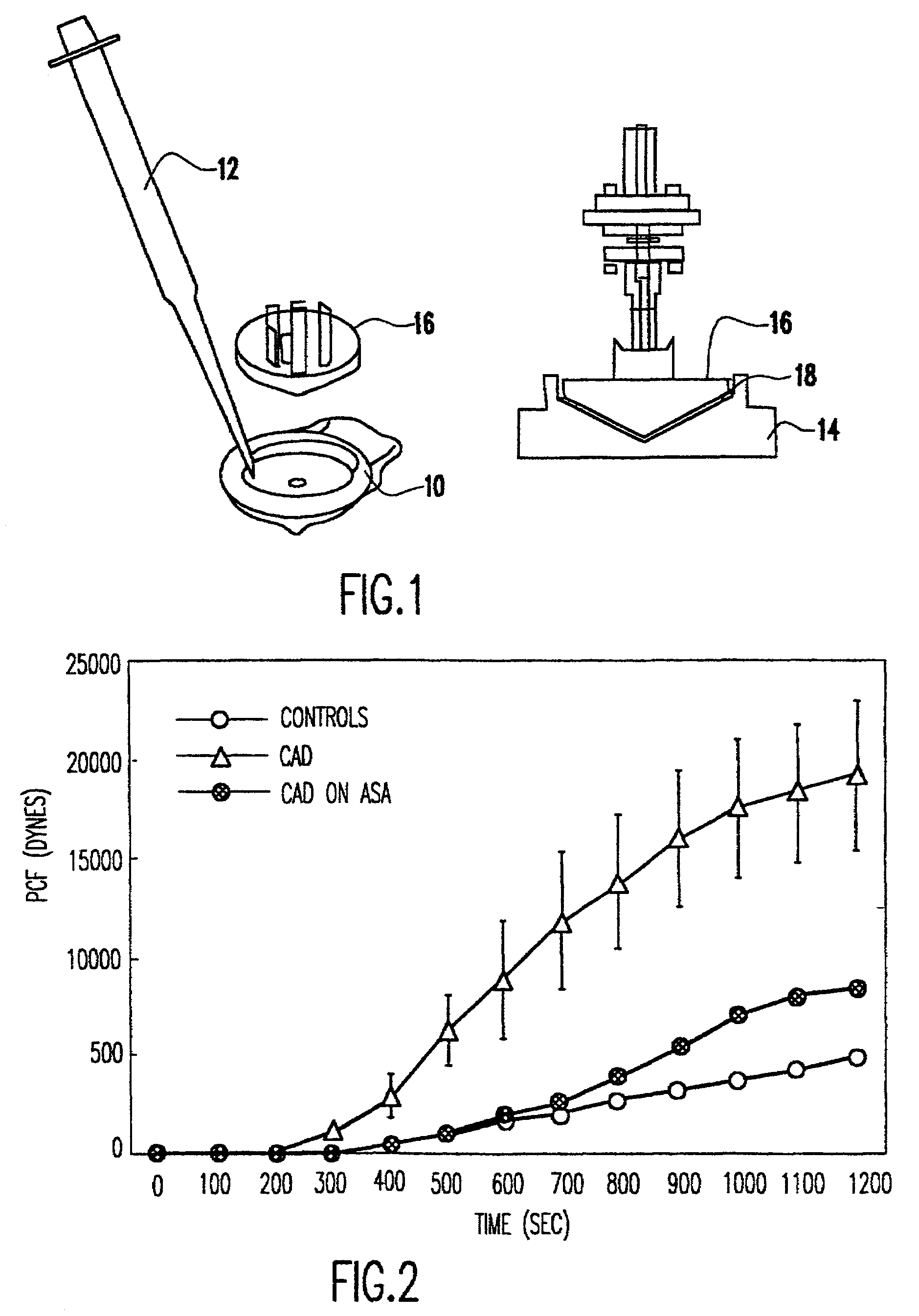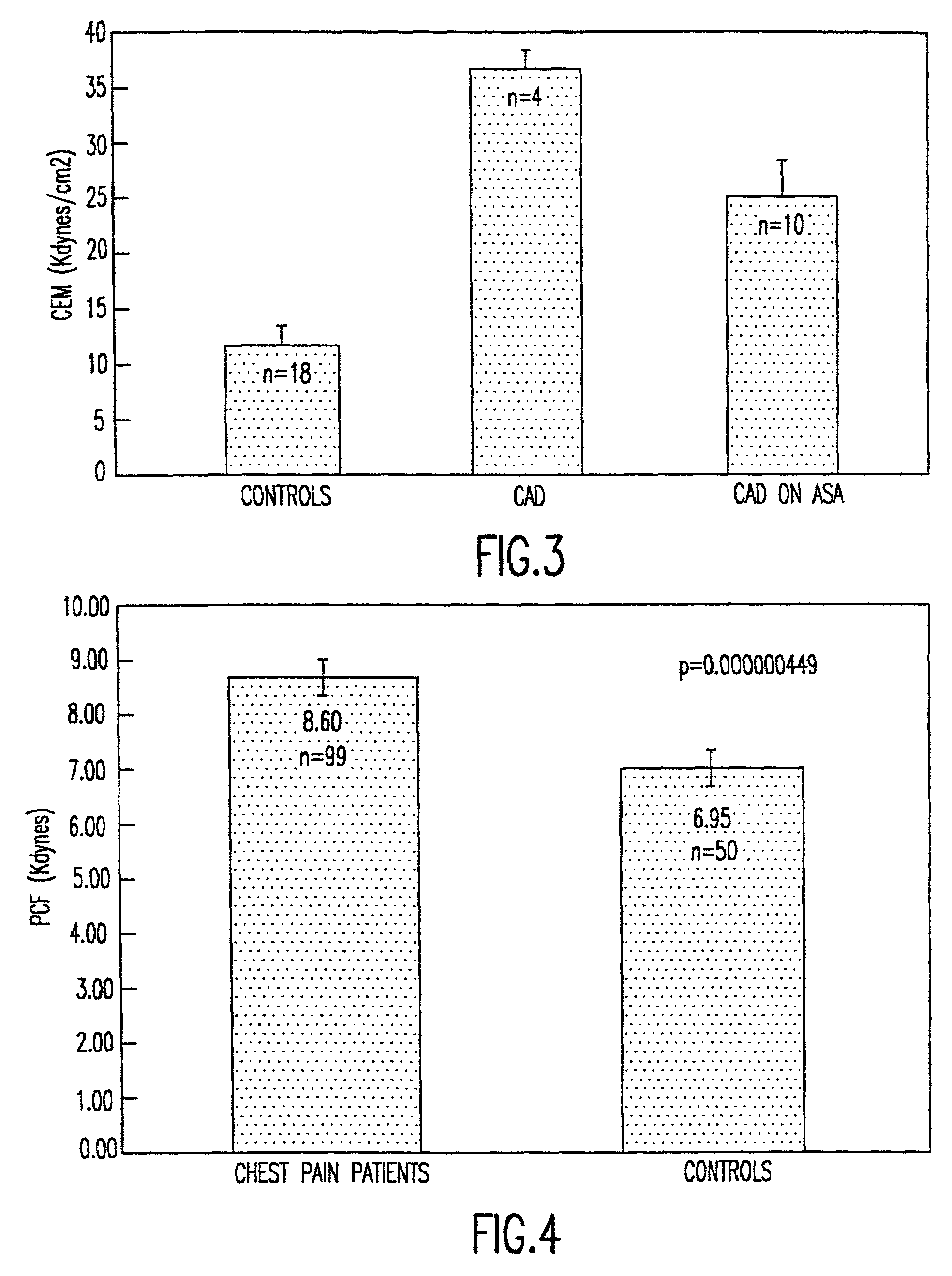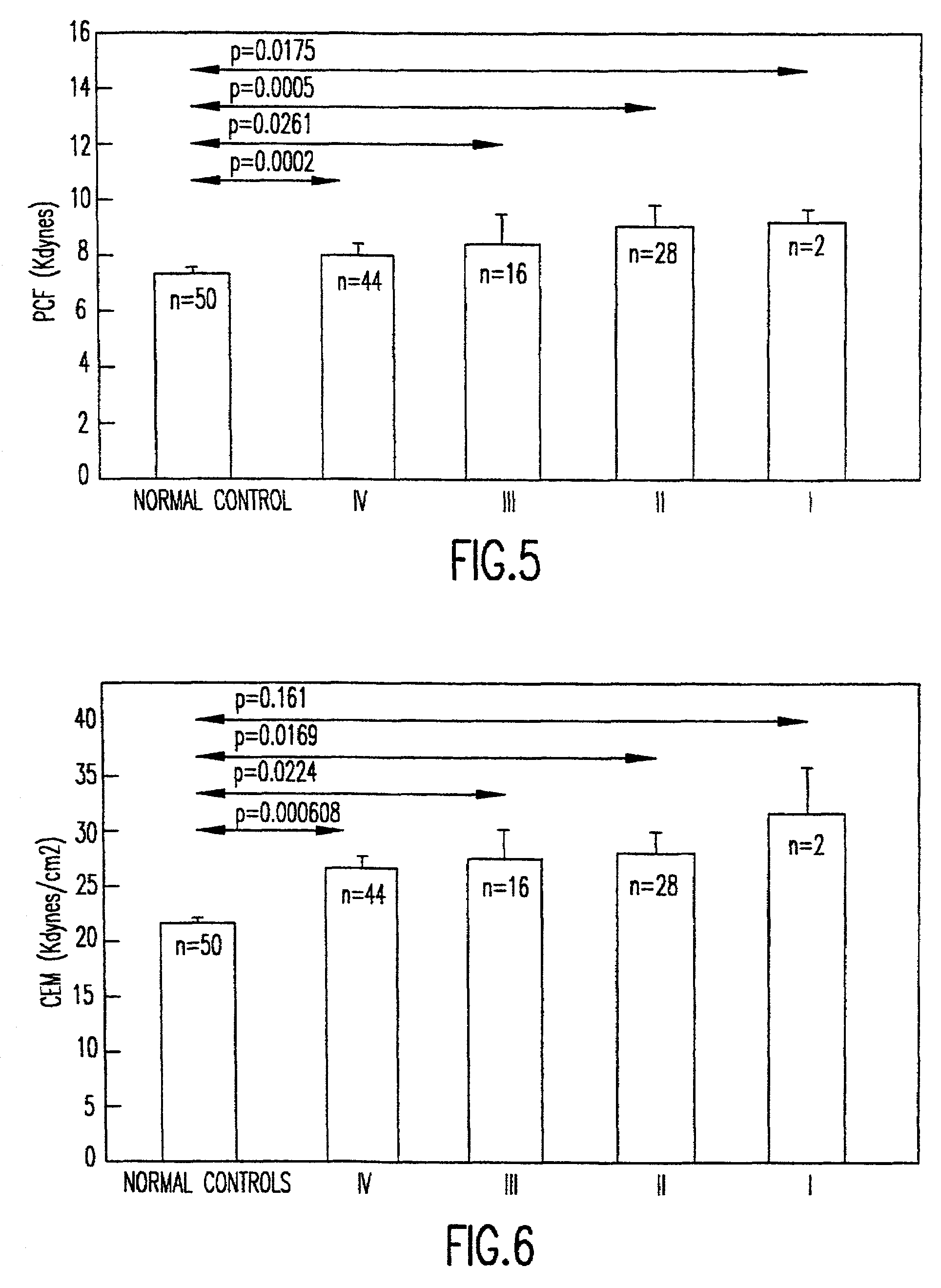Method of using platelet contractile force and whole blood clot elastic modulus as clinical markers
- Summary
- Abstract
- Description
- Claims
- Application Information
AI Technical Summary
Benefits of technology
Problems solved by technology
Method used
Image
Examples
Embodiment Construction
[0036]The invention contemplates making PCF and / or CEM measurements on whole blood clots obtained from patient samples during clot formation, and then using these measurements as a screen to identify patient's at risk for an adverse vascular outcome. Application of this technique to clinical samples confirmed that clots with low PCF and / or CEM were less hemostatic and placed the patient at risk for bleeding in conditions such as primary fibrinolysis, Glanzmann thrombasthenia and coronary artery bypass procedures. PCF values less than 4 kilodynes after 720 seconds of clotting are abnormally low. Patients with severe thrombasthenia typically have PCF values below 2 kilodynes. CEM is affected by both fibrinogen concentration and platelet function. CEM values less than 14 kilodynes per cm2 are indicative of deficient clot formation. In addition, application of this technique to clinical samples confirms that elevations of PCF and CEM are associated with arteriovascular disease and incre...
PUM
 Login to View More
Login to View More Abstract
Description
Claims
Application Information
 Login to View More
Login to View More - R&D
- Intellectual Property
- Life Sciences
- Materials
- Tech Scout
- Unparalleled Data Quality
- Higher Quality Content
- 60% Fewer Hallucinations
Browse by: Latest US Patents, China's latest patents, Technical Efficacy Thesaurus, Application Domain, Technology Topic, Popular Technical Reports.
© 2025 PatSnap. All rights reserved.Legal|Privacy policy|Modern Slavery Act Transparency Statement|Sitemap|About US| Contact US: help@patsnap.com



